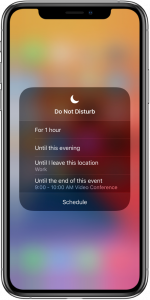Five Tips for Setting Boundaries in a Hybrid Workplace

I recently reflected on an executive leadership coaching panel discussion on the topic “Lines in the Sand: Setting Boundaries in Today’s Global, Always-On Workplace.” The similarities in perceptions between working hybrid or remotely and an “always-on” environment are striking. And the expectations are as well.
The lines between when we clock in and check out are blurred at best. It can seem like we’re always “on” and accessible. Giving that impression or acting as if we’re always accessible is not a recipe for success – individually or for organizations. We need time to disconnect and recharge to be at our most creative and productive when we work. It also makes for a more pleasant parent, partner, friend, etc. But sadly, many organizations constantly push boundaries. It is up to individuals and leaders to keep defining, communicating, and demonstrating effective boundary-setting to ensure healthy, productive, engaging work environments.
Five Tips:
1. Establish agreements
Openly establish agreements and boundaries with co-workers. Figure out what works for you and the team and stick with it (with exceptions for extreme circumstances).
-
- Set a regular start and end time to your day, whether you are in the office or working from home and a time that you might usually scan email later in the evening or first thing in the morning.
- Have a clear understanding about how and when you will cover for each other when someone needs personal time during the day, for PTO, etc.
- Discuss boundaries around weekends. Define “emergencies.” Teamwork and transparent communication are key. Boundaries outside of work are important too.
- Agreements around device-free time, children’s bedtimes, gym time, sleep-in days, etc., can go a long way to enabling regular downtime.
2. Get clear on what is important
Get clear on what’s important to you outside of work; otherwise, it is easy to let work creep into too much of your personal time – robbing you of your work effectiveness and of having a joyful life! For example, many people say that family is important – but get really clear and specific about WHAT is important. Is it important to have dinner together every night? To read bedtime stories? To attend events together? To have family-focused weekends? Clarity and inspiration will make it easier to set and keep boundaries.
Also, get clear on what is important at work. Many times, boundaries get crossed due to false crises. Don’t create them, and don’t overreact when others create them. Often good listening, a few calm questions, and quick brainstorming of options can reduce anxiety and panic and allow for a more reasonable approach to an issue that doesn’t have to include it being taken care of tonight. Granted, there are times when crises are real and extra time is needed, but those don’t have to be the norm.
3. Use technology to your advantage
Leverage your calendar. Indicate working hours and/or block out times when you are unavailable for meetings, including appropriate morning and evening hours. Use auto-reply if you will be unavailable to respond for a longer-than-usual amount of time.
For example, our love/hate relationship with our addictive mobile devices requires some care too. These things which keep us “on” are also very capable of helping us be “off”, by auto-replying to texts when driving, in a meeting, sleeping, etc., or blocking calls, using caller ID, etc. You can also establish no-device zones or times, e.g. at the dinner table, in the bedroom, on Saturdays.
4. Be brave – yes is not the only answer

Saying no to a direct request of your time is not easy, especially when the request comes from your boss or an important client. But often, an over-eagerness-to-please can cause you to say yes when you are making an unneeded sacrifice. Always giving an unequivocal yes and/or being overly flexible can set up unwelcome behaviors and expectations from that boss or client.
-
- Take a pause and a breath before immediately answering yes.
- Ask questions to clarify needs and timing – it’s okay to offer alternatives while making sure needs get met.
5. Remember, you have a choice
It can be easy to get overwhelmed with the “always-on” nature of the hybrid/remote workplace today and to slip into a victim mentality about it. But you always have a choice. Focus on what you can control and do your best to maintain healthy boundaries. If your boss or organization has a very different philosophy or culture regarding boundaries it may be time for a new role or organization.
You deserve to be thriving, not just surviving.
Let us know your best tips for thriving in today’s always-on workplace. What works for you?
____________________________
About the author:
Tawny Lees, M.B.A., is the COO of Mariposa Leadership, Inc. She coaches, teaches, leads, ensures client satisfaction, and is a coach/client matchmaker extraordinaire. Tawny’s coaching career began in 2004, inspired and informed by over 18 years of corporate leadership experience. She held VP roles in the financial services industry in functions as diverse as Risk, Sales, Service, Operations, Change Management, and Marketing. Despite literally growing up in crazy-paced organizations, Tawny maintained a pragmatic and grounded perspective on leadership.
Find out more about our executive leadership coaching workshops and one on one coaching services.
MORE
